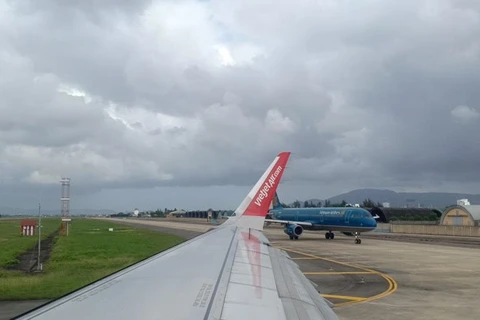Da Nang (VNA) – Over the past 25 years, the central city of Da Nang has worked hard to contribute to the Vietnam-US cooperation through various joint projects, one of which was the dioxin detoxification in Da Nang airport.
According to Vice Chairman of the municipal People’s Committee Ho Ky Minh, the Prime Minister in 2012 approved a national plan of action to address the consequences of toxic chemicals used by the US during the war in Vietnam to 2015 and orientations to 2020. One of the tasks set by the national plan was to detoxify dioxin-polluted soil and sludge in Da Nang airport.
The project on dioxin detoxification in Da Nang airport was conducted by the People’s Air Defence-Air Force with the sponsorship of the US Agency of International Development (USAID, with the goal of treating and isolating dioxin-contaminated sludge to eliminate dioxin exposure risk in the surrounding community, while enhancing Vietnam’s capacity in implementing environmental pollution assessment and treatment activities.
It covered an area of 18.3 hectares with 72,900 cu.m of sludge needing treating. In 2016, the total volume of sludge and soil subjected for detoxification increased to 150,000 cu.m.
Capital for the project came from non-refundable ODA of the US Government through the USAID.
During its implementation from 2012 to 2018, the People’s Committee of Da Nang directed sectors and localities to coordinate with and create favourable conditions for the project, said Minh.
He said that in 2014, the city proposed the project side and relevant agencies to organise training courses on work safety for workers and management officials to avoid risk of exposure to dioxin. Da Nang also sent officials to join the courses.
According to a report from the Air Defence - Air Force, 162,567 cu.m of dioxin contaminated sludge and soil were cleaned, returning about 29 hectares of area for social-economic activities. Dioxin exposure risk for human and environment was minimised. The success of the project helped erase Da Nang airport, which is a former US air base, out of the dioxin hot spot list. Work safety was ensured throughout the implementation of the project and no incident was recorded.
Minh said that the completion of the project gave more area for the expansion of Da Nang International Airport, with the building of T2 Terminal, to raise the airport’s capacity to 6 million passengers per year and 1,600 passengers per hour in peak time.
Under the airport’s planning, the terminal is expected to serve over 2.3 million passengers in 2022, 4 million in 2025 and 6 million in 2030.
Regarding the cooperation in other fields between Da Nang and US businesses and organisations so far, Minh said that as of May 31, Da Nang had hosted 68 projects invested by US businesses with total investment of 590 million USD.
According to Minh, revenue in the US market accounted for 20.5 percent of the total export value of the city. Major products shipped to the US included garment and textile, fisheries, children’s toys, fishing rods, candles, furniture, handicrafts, automobile spare parts, and electricity engines.
Meanwhile, imports from the US made up about 5 percent of the city’s total, mostly for equipment, transport vehicles, pharmaceuticals, materials for fishing rod production and for garment and textile sector, and plastics.
Currently, more than 20 local enterprises in Da Nang have traded with US peers, said Minh.
He noted that in the coming time, Vietnamese and US enterprises will seek partnership in tourism, development of supply chain and human resources, ports and logistics, urban public transportation, information and communication technology and smart city, health care, education and training.
The Da Nang government will create optimal conditions for investors, Minh said, adding that the city will coordinate with businesses and investors to remove obstacles and difficulties facing them during the implementation of projects./.
VNA
























